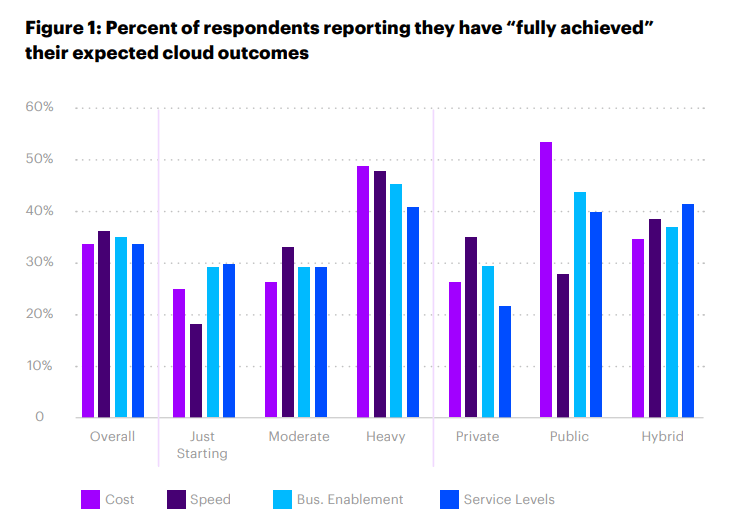Are cloud migrations meeting expectations?

Two-thirds of large enterprises have not fully achieved their expectations for cloud migration, particularly when it comes to a move to private cloud environments
According to a report by Accenture, businesses that have undergone cloud migration journeys are being hampered by security and complexity challenges as a result of the transition.
In its ‘Perspectives on Cloud Outcomes: Expectation vs. Reality’, a survey of 200 senior IT professionals found that while most were, on the whole, “satisfied” with migration results, just a third said they had fully realized expectations in cost, speed, business enablement, and service levels.
While the rate was higher for companies employing public and hybrid cloud models (42 percent and 38 percent), just 28 percent of private cloud users said their early expectations had been achieved.
Users of the latter reported more struggles with the technology but were most challenged by cost-saving and service-level improvements, without the support and pre-ordained packages available from cloud giants like AWS, Azure or IBM.

Source: Accenture
While more than half (54 percent) of public cloud users reported having captured cost-saving goals on the other hand, just 28 percent had experienced their anticipated speed-to-market benefits.
“Like most new technologies, capturing the intended benefits of cloud takes time,” commented Kishore Durg, Senior Managing Director of Accenture Cloud for Technology Services.
Durg explained that many companies enacting the transition may have underestimated the learning curve— one that’s influenced by “many variables and barriers”— and this has stopped them fully realizing the benefits of a slick and efficient transition.
That challenge is compounded by IT teams facing pressure to showcase “direct business outcomes” from cloud journeys, “that are better able to use cloud technologies to enable rapid innovation.”
YOU MIGHT LIKE

Security still top concern for cloud computing
Cloud security challenge
Asked to identify the top three barriers to realizing the full power of the cloud, security and compliance risks topped the list for just shy of two-thirds (65 percent) of respondents.
Cybersecurity and compliance with data regulations are crucial for businesses moving operations, and sensitive data, to the cloud. As ‘mission-critical’ operations are increasingly migrated, threats to data, finances, and operations as a result of being compromised grow in parallel.
Meanwhile, a lack of cloud industry standardization means that, as yet, each cloud provider might offer their own set of guidelines and security protocol.
This was followed by ‘business complexity and organizational change’ (55 percent) and ‘legacy infrastructure and/or application sprawl’ (43 percent).
But a lack of cloud skills within the organization also featured (42 percent), and this knowledge gap was cited as the main reason respondents would consider managed service providers to run their cloud services— even beyond any potential cost-benefit or efficiency gained as a result.
For those businesses not yet enjoying the much-hyped benefits of cloud migration, however, Durg said investment in cloud technology tended to follow an upward curve where the “more widespread your adoption, the greater the value lift.”









